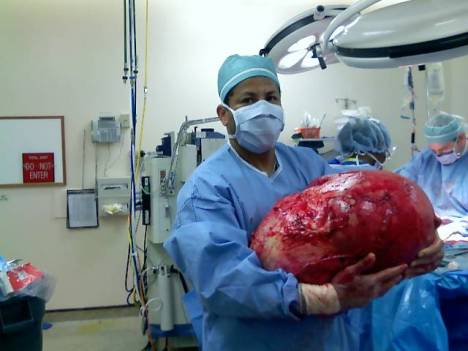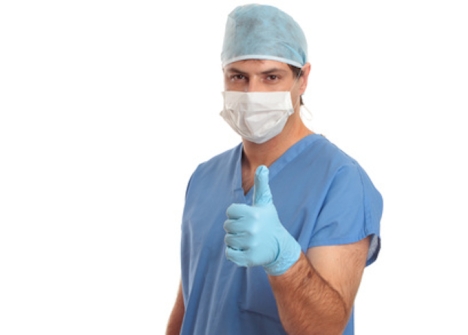
Once I get my lymphedema under control, I might get a compression sleeve from the company Lymphedivas—these are just some of the patterns. From the blog The Lymphie Life (http://lymphalexa.com)
My lymphedema was diagnosed by my oncology surgeon Nov. 6. I spoke to my cancer navigator, Miriam, and she said get to a lymphedema specialist as soon as possible. She sent on a referral to Princess Margaret for the Lymphedema Clinic, and gave me the name of her lymphedema specialist, suggesting that I call as soon as possible because Lindsay is very popular, and the sooner the better in starting to beat this condition back.
I saw Lindsay Davey at Toronto Physiotherapy two weeks after diagnosis, Nov. 20. My man came with me to offer support, ask questions and observe and learn the massage technique. I felt badly for both of them at the outset, because while I love to be touched, I hate to be poked, prodded and touched in an “anatomical” way. (I cannot take my or anyone else’s pulse, feel carefully along a bone looking for a bump, give or receive a good massage. Too much mucking with body parts and components. I find it icky, hence no career in this field).
She took an excellent history, then examined me. I have lymphedema of the right arm, hand, trunk and breast. That sucks. The trunk means my side, over the ribs, and back around the area of the breast. She completely overwhelmed me with info, and we all laughed about it, because you could learn this in a series of lectures, or expect a physiotherapist to condense it to 40 minutes and deliver while giving the very specific type of massage that is used for lymphedema drainage. My man took in lots, I took in some, and was glad that I’d read up on it all before hand.
The massage is done without oil or lotion, because the massaging hand is supposed to drag the skin so the lymph fluid underneath the skin can be moved. When a patient like me has 15 lymph nodes removed and has 25 rounds of radiation, changes are pretty good that lymphedema will follow. Not guaranteed. In MY case? Iron-clad guarantee I’d get it.
On the I am now going to paste in here the best thing I have found about lymphedema, complete with illustrations. It could get heavy, but read on. In the next post I’ll include pics of me in my new sleeve.
From the Breast Care Center of Miami:
Lymphedema
Definition:
Lymphedema is defined as the abnormal accumulation of protein-rich fluid in the tissue, which causes chronic inflammation and fibrosis.
Incidence:
It is estimated that between 3 and 5 million patients in the United States suffer from either upper or lower extremity lymphedema. Arm lymphedema or chronic swelling of the arm occurs in 10 to 30% of women following treatment for breast cancer. In the United States, the most common cause of secondary lymphedema is the impaired or disrupted flow of lymph fluid through the draining lymphatic vessels and lymph nodes, usually as a consequence of surgery and/or radiation therapy. If the remaining lymphatic vessels are unable to accommodate the increased lymphatic load, accumulation of lymphatic fluid develops resulting in swelling of the upper extremity. Once damage has occurred to the lymphatic system the transport capacity is permanently diminished. The risk of lymphedema is life-long.
Functions of the Lymphatic System:
Lymphatic vessels drain fluid from all parts of the human body. The lymphatic fluid is formed at the point where arteries turn into veins just underneath the skin. Our body produces between 3 and 5 liters of lymphatic fluid on a daily basis. This fluid gets reabsorbed by the lymphatic vessels and it travels to the lymph nodes where it gets filtered and “cleansed”, and then rejoins the circulatory system at the level of the neck.
|
• Reabsorbs the continuous production of lymphatic fluid |
|
• Removes excess fluid |
|
• Blocks the spread of infection or cancer cells |
|
• Maintains balance of fluid and protein |
The Lymphatic System and Breast Cancer:
Most of the lymphatic vessels of the breast drain fluid to lymph nodes under the arm and to a lesser extent to the lymph nodes behind the chest bone and collarbone region. Breast cancer cells can spread through the lymphatic vessels into these lymph nodes. The standard surgical treatment for invasive breast cancer is to remove the lymph nodes under the arm and look at them under the microscope to detect cancer cells. The only accurate way to find out if cancer cells have spread to the lymph glands is by removing them. The two techniques employed to examine the lymph nodes are the axillary node dissection and sentinel node biopsy. Sentinel node biopsy has replaced axillary node dissection as the procedure of choice in staging the axilla in patients with early invasive breast cancer. It prevents an axillary node dissection in approximately 70% to 80% of breast cancer patients. The incidence of lymphedema using this technique is approximately 3%. |
|
|
Axillary Lymph Node Dissection: The removal of the axillary lymph nodes interrupts the drainage of the lymphatic fluid from the arm and breast. As a result, it will limit the transport capacity of the lymphatic system. Some breast cancer patients may develop lymphedema. |
|
|
Arm Lymphedema:
A simple way to try and explain what may happen when lymph nodes are removed and lymphedema occurs is to use the analogy of a traffic jam when four lanes of traffic are detoured into just one lane. As there is only one lane to pass through, as a result of lane closures, (lymph node removal) the other three lanes of traffic (fluid) must get in line to merge over to the only open lane. This results in major backups as each car must now make room to allow the other cars from the other three lanes to merge. The end result is slow moving traffic (fluid) and a massive accumulation of cars (more fluid) waiting to pass through the only open lane (one lymph node). |
|
|
Signs and Symptoms of Lymphedema:
The signs and symptoms of lymphedema of the arm include:
|
• Feeling heaviness and tightness in the arm |
|
• Aches and discomfort |
|
• Limited motion of the arm and swelling |
There is also an increased risk of infection resulting from a trivial skin breakdown. If breast preservation is chosen, the affected breast is also at risk of edema.
Treatment:
Early detection is paramount as lymphedema is potentially reversible when treated in its early stages. Once lymphedema is diagnosed, treatment should begin as soon as possible. The gold standard treatment is complete decongestive therapy.
This includes:
|
• Manual lymphatic drainage |
|
• Compression bandaging |
|
• Therapeutic exercise |
Once lymphedema is under control, patients are recommended to start a maintenance phase which includes skin and nail care, weight control and diet, wearing a compression garment especially when flying, exercise program, and strict blood pressure control for patients with a history of hypertension.
Prevention Practices to Prevent Lymphedema:
Patients should be instructed on precautions to decrease the risk of developing lymphedema or avoid its progression. The patient should bear in mind that most of the measures your doctor will tell the patient is to protect their arm. However, these measures are determined without scientific data. The old school teaching promoted the dictum of primum non nocere (first, do not harm).
Recommendations from the National Lymphedema Network Include:
Skin care:
|
• |
Avoid trauma / injury to reduce infections |
|
• |
Keep extremity clean and dry |
|
• |
Apply moisturizer daily to prevent chapping/chafing of the skin |
|
• |
Attention to nail care: do not cut cuticles |
|
• |
Protect exposed skin with sunscreen and insect repellent |
|
• |
Use care with razors to avoid nicks and skin irritations |
|
• |
If possible avoid punctures such as injections or blood draws |
|
• |
Wear gloves while doing activities that may cause skin injury |
|
• |
If scratches or punctures to skin occur, wash with soap and water, apply antibiotics, and observe for signs of infection |
|
• |
If rash, itching, redness, pain, increased skin temperature occur, contact your physician immediately for early treatment of possible infection |
Activity /Lifestyle:
There is now good evidence that progressive exercise does not affect the severity of breast cancer-associated arm lymphedema. A progressive weight-training program should be carried out under professional supervision. This has been shown to decrease the incidence of exacerbations of lymphedema and reduces symptoms as well as increases overall strength.
|
• |
Gradually build up the duration and intensity of any activity and exercise |
|
• |
Take frequent rest periods during activity to allow for limb recovery |
|
• |
Monitor the extremity during and after activity for any change in size, shape, tissue, texture, soreness, heaviness, or firmness |
|
• |
Maintain optimal weight |
Avoid Limb Constriction:
|
• |
If possible, avoid having blood pressure taken on the at-risk extremity |
|
• |
Wear loose fitting jewelry and clothing |
Compression Garments:
|
• |
Should be well-fitting |
|
• |
Support the at-risk limb with a compression garment for strenuous activity except in patients with open wounds or with poor circulation in the at-risk limb |
|
• |
Consider wearing a well-fitting compression garment for air travel |
Extremes of Temperature:
|
• |
Avoid exposure to extreme cold, which can be associated with rebound swelling, or chapping of skin |
|
• |
Avoid prolonged (greater than 15 minutes) exposure to heat, particularly hot tubs and saunas |
|
• |
Avoid placing limb in water temperature above 102 degree Fahrenheit (38.9 degrees Celsius) |
Filed under: 1 pic=1000 words, breast cancer, cancer, chemo side effects, lymphedema arm, lymphedema massage, lymphedema trunk, partial mastectomy, radiation, radiation side effects, surgery, triple negative breast cancer | Tagged: 1 pic=1000 words, axilla lymph node removal, breast cancer, breast surgery, cancer, emotional stuff, hate that cancer, lymph nodes, lymphedema, lymphedema arm, lymphedema hand, lymphedema trunk, partial mastectomy, triple negative breast cancer | Leave a comment »






















